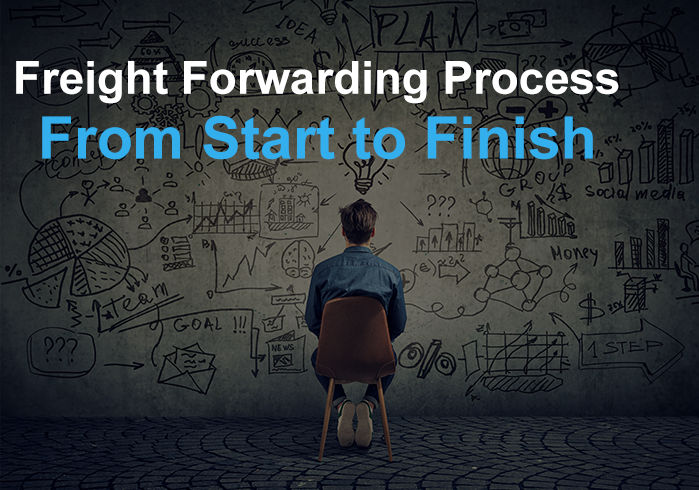
The complexity of shipping schedules means that there is an increasing number of businesses that are reliant on the freight forwarding sector. It is beneficial to use freight forwarders in certain circumstances. They can have a positive effect on your business model through their expertise and links within the shipping industry. One of the most effective tactics is to combine different freight forwarders in a network that is dynamic and can respond quickly to changes in market conditions.
If you are thinking about expanding your shipping business, freight forwarders should be considered as they will help you navigate the complex web of logistics. By using a variety of high-quality freight forwarders, you will reduce delays at customs offices and your inland transportation network will benefit from a smoother transition of cargo from the port onto land services.
For a new or small business, it can be a daunting task to take on a freight forwarder for the first time. This article takes you through the basic process. It also addresses some of the pitfalls you should avoid when setting up your supply chain. There are five critical steps that you may consider in your quest for shipping effectiveness.
FIRST: Find a good freight forwarder and secure a quotation
Do not accept proposals from service providers that are either untested or who have been tested and found to be wanting in some respects. Once you have selected a provider, request a quotation to determine whether this is a fair deal for your company. Look out for a team that has a good track record and offers a wide range of services. The customer care should be excellent. Ideally, the freight forwarder should have an understanding of your specifications and budget.
Discuss your goals and objectives in detail while you decide whether that freight forwarder has what it takes to deliver what you need. When they provide a quotation, study it carefully and do not be afraid to ask difficult questions. For example, ask about additional services such as warehousing, crating, and consolidation.
SECOND: Start the process of transporting the merchandise
Whether you are an importer or exporter, each pathway contains specific rules that you will need to follow. Some freight may require you to be both an importer and exporter at different points in the entire supply chain.
Start by bringing your merchandise to a processing warehouse. This can be an in-house outfit or one that you have hired from another party. Some freight forwarders may offer a custom crating service. Your proximity to the warehouse will determine the length of time spent and could take anywhere from days to weeks. However, it is rare that you should hit the 30-day point before this stage is complete. If this stage takes longer than 30 days, you should be asking whether you are getting a good value for your money in your supply chain.
THIRD: Clear the merchandise for import or export
The next stage is to go through customs and excise procedures. The cargo will have to be cleared for import or export. The freight forwarder will check the cargo to ensure that inventory lists are accurate. They will be particularly concerned about damage so that later claims are not raised against them. The freight forwarder may handle the customs clearance on your behalf.
There will be items that are prohibited (such as weapons) and these must be excluded from the cargo before it reaches the port grounds. Whoever is sending, receiving, or ferrying prohibited items may be liable to legal sanctions. Some freight forwarders do not offer a customs clearance service, so you need to ask when making the initial agreement about the service level. For example, you may call on the services of a third-party customs broker as an alternative.
The best freight forwarders can handle both export and import so that you do not have to worry about your involvement in the process. The country of origin will have to clear the cargo before it leaves the territory while the destination country must clear it before it continues its journey on land. A good freight forwarder will handle all these processes according to the rules of the jurisdiction. Ensure that your team is cooperative and hands over all the documents that are needed for clearance to take place.
FOURTH: The arrival and handling processes
When the cargo arrives at the destination port, there are certain procedures that will be initiated. This is what is known as arrival and handling in the industry. All pending documents must be completed. You must settle all carrier bills and have arrangements to deal with any holdups. Your freight forwarder is involved in this process. It makes sense for you to examine the contract so that you understand what kind of support you can expect throughout the process.
FIFTH: Organize the inland transportation
The final stage is organizing the inland transportation that will get the cargo to its rightful owners. You must have safe and sufficient vehicles to carry all the cargo from the terminal or port to the distribution warehouse. Most companies tend to use truckers. It is important to ask your freight forwarder to confirm that they will provide this service. If they do not, you can make alternative arrangements so that the cargo is not held up at the port.
Wrapping up
Ensure that you know every procedure and every partner in the freight forwarding process. Hire the best companies that have a good reputation and are willing to go the extra mile to meet your needs. Read the fine print and be involved throughout in case there are gaps that need to be filled. Above all, have a good plan and deal with problems at the earliest opportunity. In this way, freight forwarding will be simplified.




3 Comments on “The Freight Forwarding Process From Start to Finish”
Understandably, the final stage is the crucial step and freight companies must have safe and well-managed vehicles to deliver cargo to their authorized receivers. I do agree that it does not hurt if delivery services can go the extra mile. If I were a customer, this is how they get my patronage.
Freight prices updates need everyday
I need a fright forwarder that will help me ship a car from Dubai to Lagos Nigeria. The shipment is RoRo.